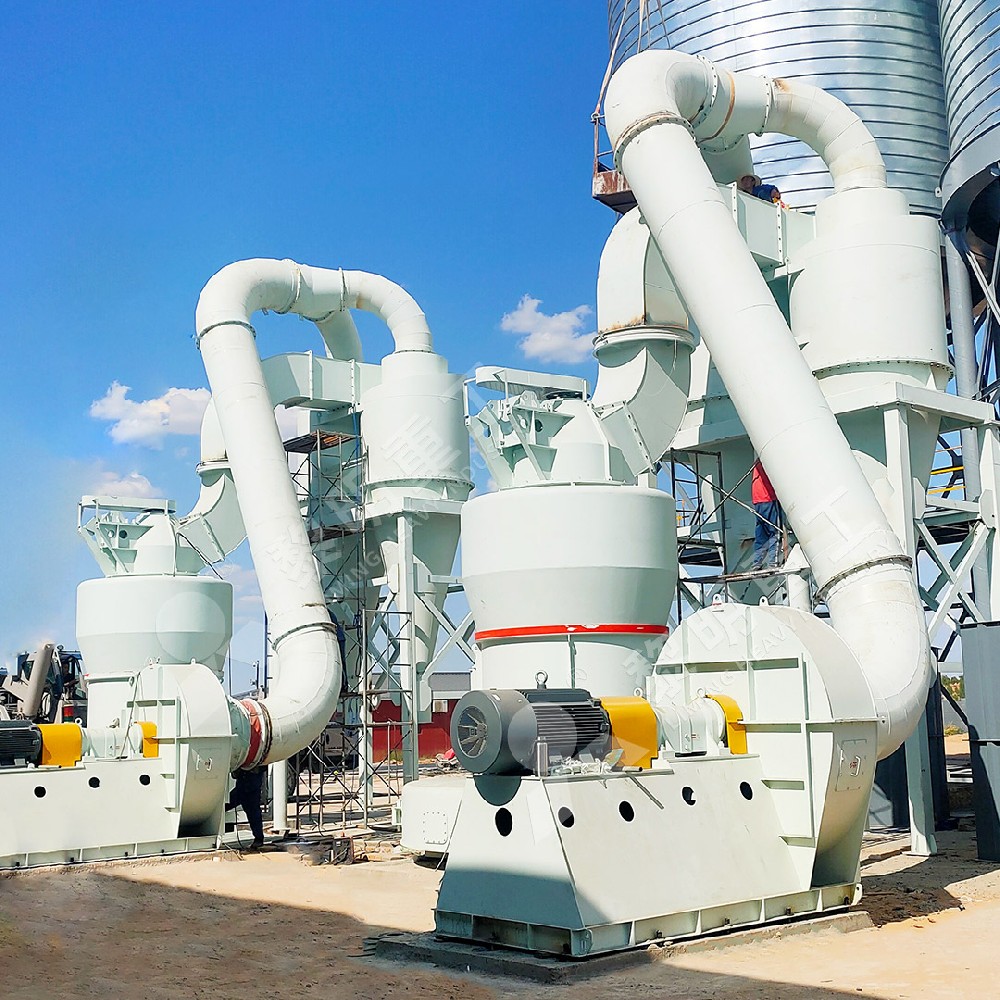The Definitive Guide to 300-Mesh Phosphate Rock Grinding Mills
Phosphate rock stands as a cornerstone of global agriculture, being the primary source of phosphorus for fertilizers that nourish crops and feed the world. However, in its raw, mined state, its potential remains locked. The key to unleashing this potential lies in the precise process of grinding, with the 300-mesh fineness emerging as the industry gold standard for numerous applications. Selecting the right 300-mesh phosphate rock grinding mill is, therefore, not merely a choice of equipment but a critical strategic decision that impacts product quality, operational efficiency, and overall profitability.
This article delves into the significance of the 300-mesh specification and explores the advanced grinding technologies engineered to achieve it reliably and efficiently.

Why is 300-Mesh the Pivotal Specification?
A 300-mesh particle size corresponds to a diameter of approximately 50 microns. Achieving this level of fineness is crucial for several reasons:
Enhanced Solubility and Reactivity: Finer particles possess a dramatically increased surface area. In the production of water-soluble phosphate fertilizers like SSP (Single Superphosphate) or TSP (Triple Superphosphate), this expanded surface area allows for more complete and faster chemical reactions with acids, leading to higher conversion rates and a superior quality end-product.
Improved Crop Availability: When applied directly as a soil amendment, finely ground phosphate rock releases phosphorus more readily, making it accessible to plant roots over time. The 300-mesh fineness optimizes this slow-release mechanism.
Uniform Blending: In the manufacturing of compound fertilizers, a consistent and fine powder ensures homogeneous mixing with other nutrients like nitrogen and potassium, guaranteeing every granule contains the intended balance of nutrients.
Optimized Mill Options for 300-Mesh Phosphate Rock
Not all grinding mills are created equal. The abrasive nature and required fineness of phosphate rock demand robust and specific technologies. Here are the most effective types of phosphate rock powder machinery for achieving a 300-mesh product:
1. Raymond Mill (Vertical Roller Mill)
A classic and widely adopted solution, the Raymond Mill is renowned for its stability and cost-effectiveness for medium to fine grinding.
Working Principle: Material is fed into the grinding chamber and crushed between rotating rollers and a stationary grinding ring.
Advantages for 300-Mesh:
High Efficiency: Its integrated classifier allows for immediate separation of fine powder, recycling coarse particles for further grinding, which enhances overall energy efficiency.
Consistent Fineness: Offers reliable control over product size, typically ranging from 80 to 425 mesh, making 300-mesh a comfortable and stable output.
Durability: Key grinding components are made from high-quality wear-resistant materials, standing up well to the abrasiveness of phosphate rock.
2. Vertical Roller Mill (VRM)
For large-scale industrial production, the Vertical Roller Mill represents the pinnacle of efficiency and integration.
Working Principle: Material is fed onto a rotating grinding table and crushed under pressure from hydraulically loaded rollers.
Advantages for 300-Mesh:
Exceptional Energy Savings: VRMs can consume 30-50% less power than traditional ball mills, as they combine grinding, drying, and classification in a single unit.
Integrated Drying: They can effectively utilize waste heat from kilns to dry moist phosphate rock simultaneously with grinding, streamlining the process.
High Capacity: Ideal for large-tonnage processing plants requiring a continuous and reliable supply of 300-mesh powder.
3. Ultra-Fine Grinding Mill
When the application demands a fineness beyond 300-mesh or requires a very narrow particle size distribution, Ultra-Fine Grinding Mills are the specialized tool of choice.
Working Principle: Often based on a ring-roller design with multiple layers of grinding rings and rollers, it subjects the material to prolonged and intensive grinding.
Advantages for 300-Mesh:
Precision Fineness: Capable of producing powder in the range of 325-2500 mesh, achieving 300 mesh is well within its capability with exceptional consistency.
High Product Purity: Due to its design and use of high-quality materials, it minimizes iron contamination, which is critical for certain industrial-grade phosphate products.
Key Considerations for Selecting Your 300-Mesh Grinding Solution
Choosing the right mill extends beyond the machine type. An intelligent selection process involves:
Raw Material Properties: Analyze the hardness, moisture content, and initial feed size of your phosphate rock.
Production Capacity Requirement: Determine your required tons-per-hour output to size the equipment correctly.
Energy Consumption: Evaluate the long-term operational costs, where technologies like VRMs offer significant advantages.
Automation Level: Modern mills come with advanced control systems that minimize human error and ensure consistent product quality.
Conclusion
The journey from raw phosphate rock to a valuable agricultural and industrial resource is powered by precision grinding. The 300-mesh phosphate rock grinding mill is the engineered heart of this transformation. By understanding the strengths of different technologies—from the reliable Raymond Mill and the high-efficiency Vertical Roller Mill to the precision of Ultra-Fine Mills—producers can make an informed investment that optimizes their process, enhances product value, and ultimately contributes to a more productive agricultural sector. Investing in the right grinding technology is an investment in the future of food security.





